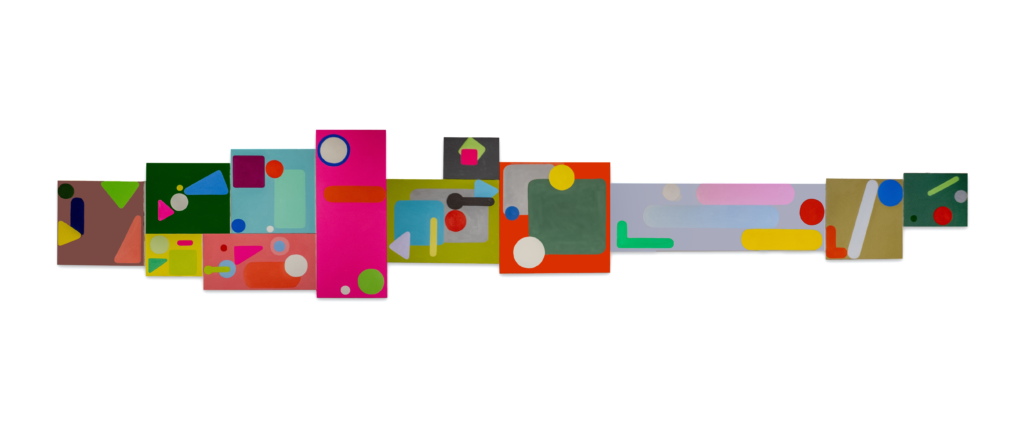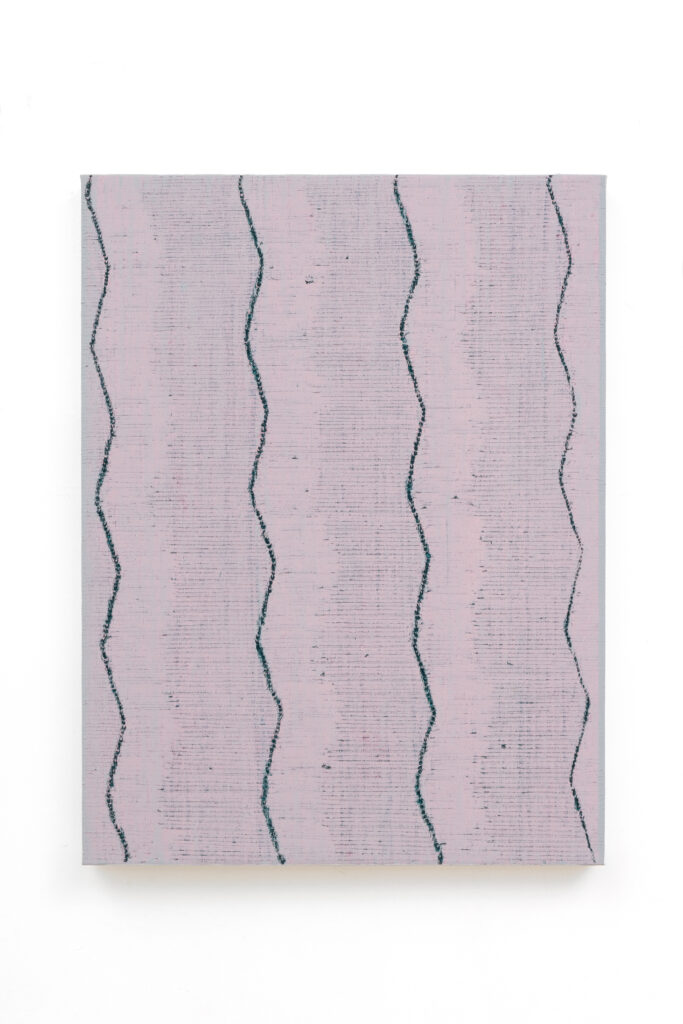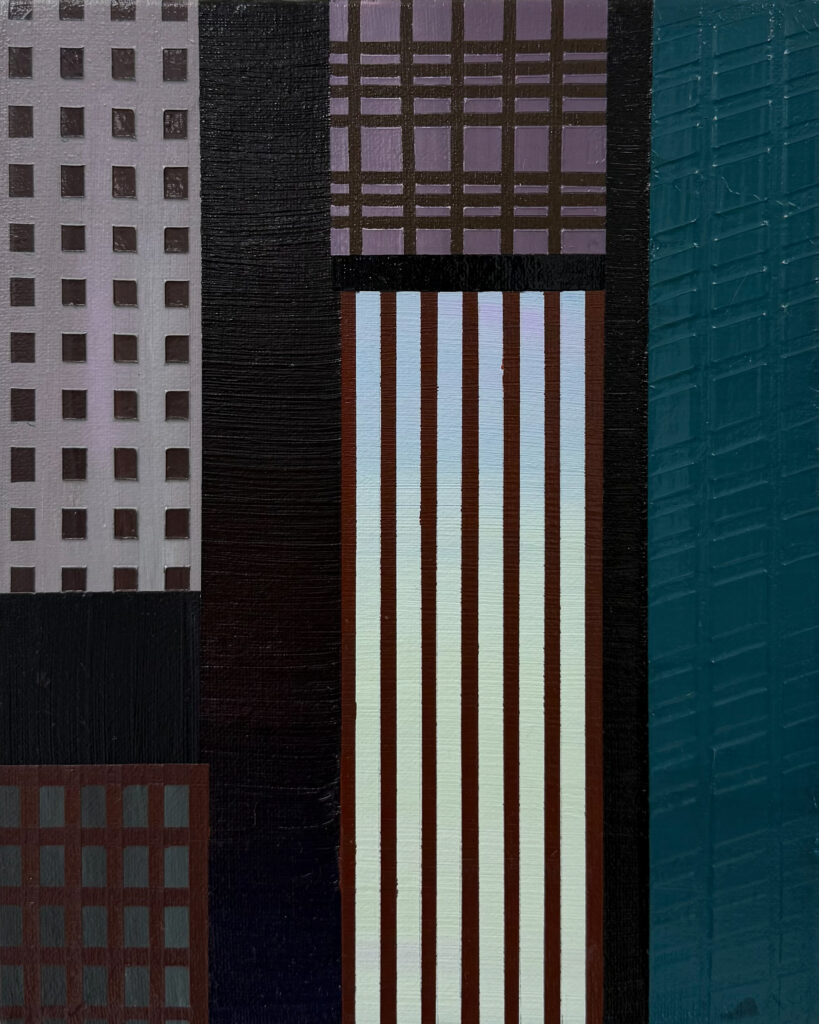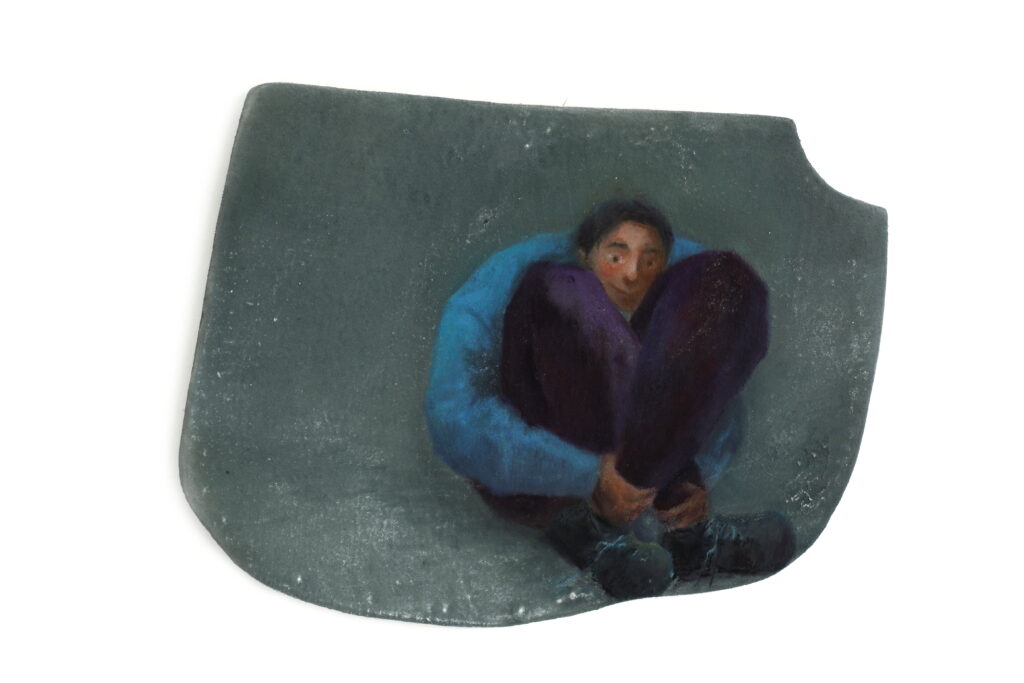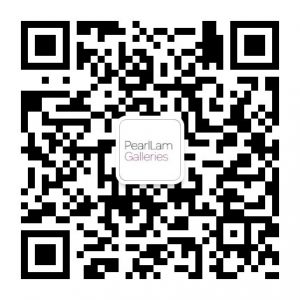19 July–11 October, 2025
Minutiae and Monologues
Shanghai
Overview
SHANGHAI—Pearl Lam is pleased to present Minutiae and Monologues, featuring works by eight artists, including Chen Ying, Chi Qun, Chisato Matsumoto, Meng Yangyang, Ni Hao, Ni Zhiqi, Ou Jin, and Shi Xiaobo. This group exhibition foregrounds a non-monumental aesthetic in which contemporary artists turn inward. In contrast to the monumentality often associated with large-format works entangled with public authority and grand historical narratives, Minutiae and Monologues suggests that the physical constraints of small-scale art paradoxically allow for a greater degree of creative freedom. Liberated from utilitarian demands, these works offer a return to the intimate, the intuitive, and the personal.
French philosopher Gaston Bachelard wrote in The Poetics of Space (1958), “Miniature is one of the refuges of greatness… In smallness, the being is concentrated.” This insight not only reveals the psychological dimensions of spatial perception but also proposes a distinctive ontology of art. The aesthetics of “greatness in smallness” transcends visual scale to become a methodology of resistance in contemporary artistic practice. This philosophical lineage resonates with Michel Foucault’s concept of heterotopia—those in-between spaces that grow in the fissures of dominant structures, carrying subversive potential. Within this framework, small-scale artistic creation becomes both a poetic and critical micro-field of practice: at once the “shelter of being,” as Bachelard described, and a “site of resistance” in Foucault’s terms.
Each work in the exhibition functions as a diaristic monologue, where every mark or gesture records the artist’s emotional fluctuations and evolving state of mind. These works are often created spontaneously, without elaborate planning or revision. They draw from a deep well of accumulated practice, instinct, and a keen responsiveness to the moment. The result is a visual language of “unconscious writing” or “momentary capture,” resisting rigid formalism in favour of expressive authenticity. Modest in scale but rich in emotional depth, these works invite viewers into a contemplative space where the act of making becomes a way of being.
Chen Ying’s works reveal the forces of creation, destruction, and transformation beneath smooth geometric abstractions. By challenging classical techniques and conventional vision, they evoke a sense of temporality and playfulness. The artist uses industrially produced colours to sidestep personal choice, thereby eschewing the emotional in favour of the design system itself. Each piece invites viewing from all sides. Chen’s conceptual approach treats each work as a fragment of artistic language, open to interpretation and reassembly, where every line and colour quietly resists grand narratives.
Chi Qun’s artistic practice centres on the line as the fundamental element of composition. Through repetitive layering, scraping, and mark-making, she creates rich textures and subtle depth, forming a meditative microcosm. Her lines detach from representational forms and instead explore their inherent infinity and introspective quality. Treating the act of creation as both inner dialogue and spiritual cultivation, Chi seeks a quiet, grounded way of being. In her recent works, she introduces broken lines formed by dots into previously orderly grids of vertical and horizontal strokes, bringing flow and organic growth. These minute, shifting structures, glowing or fading, raised or recessed, pulse like breath and point toward an ideal space where sensation and form become one.
Chisato Matsumoto reinterprets traditional Japanese techniques to create new value. Using shibori, a traditional Japanese tie-dyeing method, she binds thread into three-dimensional forms that evolve into installations, performances, and kinetic works. In this exhibition, her practice transcends craft traditions, transforming fabric into sculptural forms. Each shibori knot is seen as a human figure, forming a larger composition based on the theme of “the individual and the crowd.” At the core of her work is the interplay between micro and macro perspectives. Each dyed knot resembles a star, collectively forming an expansive galaxy that echoes the rhythms of the universe and expresses a philosophy of coexistence.
Meng Yangyang’s delicate, poetic paintings explore human existence through a dreamlike interplay of illusion and reality. Eschewing deliberate design, her process flows naturally from intuition. Using subtly nostalgic colours and restrained, unhurried brushstrokes, she creates a dreamlike atmosphere. The figures in her paintings often appear gently blurred, as if immersed in their own inner worlds. Her works prioritise emotional expression, with every stroke reflecting her love of life and tender gaze upon the world. These works are like monologues of her soul, conveying a serene yet profound power within their modest frames.
Ni Hao’s paintings challenge traditional easel formats through bold brushstrokes and a fluid use of thinners, shifting between figuration and abstraction. He allows the medium to guide the process with pigment flowing freely as if in silent collaboration. Lines and colours emerge intuitively, echoing thoughts and emotions in spontaneous gestures. Fragments of fictional narratives and personal memories overlap on the canvas, creating a sense of movement within stillness. These layered images form imaginative micro-worlds, offering glimpses into the artist’s inner landscape. Each work becomes a quiet reflection, revealing a deeply personal and poetic visual language.
Ni Zhiqi’s artistic practice is marked by a distinct personal language that merges Eastern and Western artistic traditions with contemporary aesthetics. Rejecting grand narratives, his work unfolds like intimate chronicles shaped by the passage of time. Highly sensitive to the colour and texture of materials, Ni maintains a subtle dialectic between the visual impact of the medium and the object’s inherent qualities. In this exhibition, his paper-based works incorporate collage, dye, and mixed media. Through layered colours and textures, he preserves traces of memory and time. Worn colours and rough edges evoke a sense of quiet authenticity. These works become poetic monologues of the artist’s inner world, transforming fragments of everyday life into deeply felt emotional expressions.
Ou Jin’s practice is defined by a rational, ordered aesthetic rooted in mathematical logic. Through geometric forms, lines and colour, he constructs precise, rhythmically structured compositions. His process merges hand and machine: layers of pigment are applied and dried, then computer-generated images are engraved into the surface using mechanical tools. These images, shaped by algorithm rather than human intuition, reflect a shift in authorship. The artist gradually recedes as machine autonomy comes to the fore.
Shi Xiaobo’s artistic practice focuses on purified forms that explore both natural and urban environments, ranging from uniform suburban housing and highways to towering skyscrapers and busy airports. He captures, refines, and abstracts repetitive shapes to create a distinct visual language marked by delicately placed dots and lines. These elements reveal the hidden structures beneath the surface of everyday life, inviting reflection on social realities, human nature, and individual existence. His works express soulful, passionate cries that seek to break free from worldly constraints and return to the true essence of art through straightforward yet profound visual expression.


